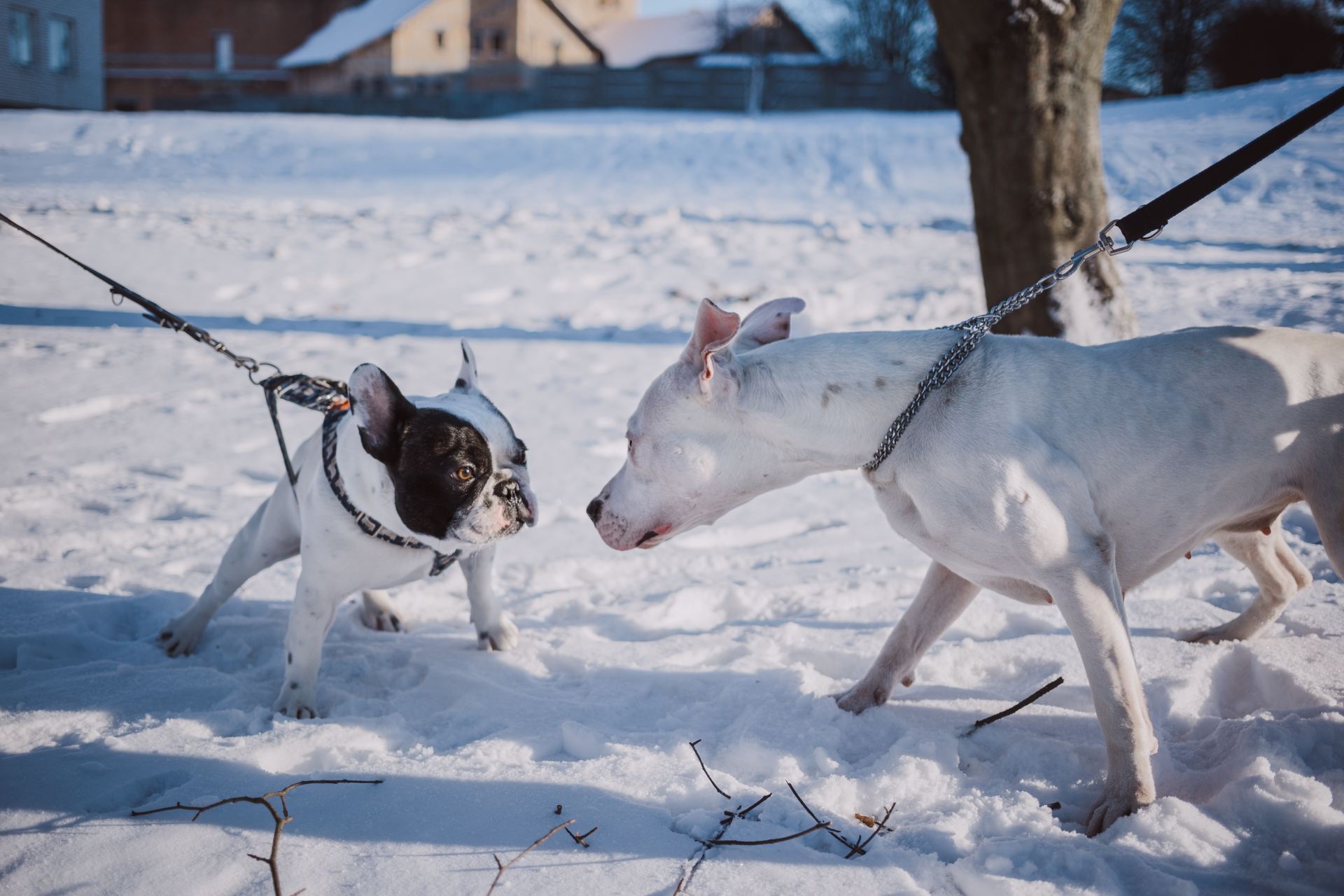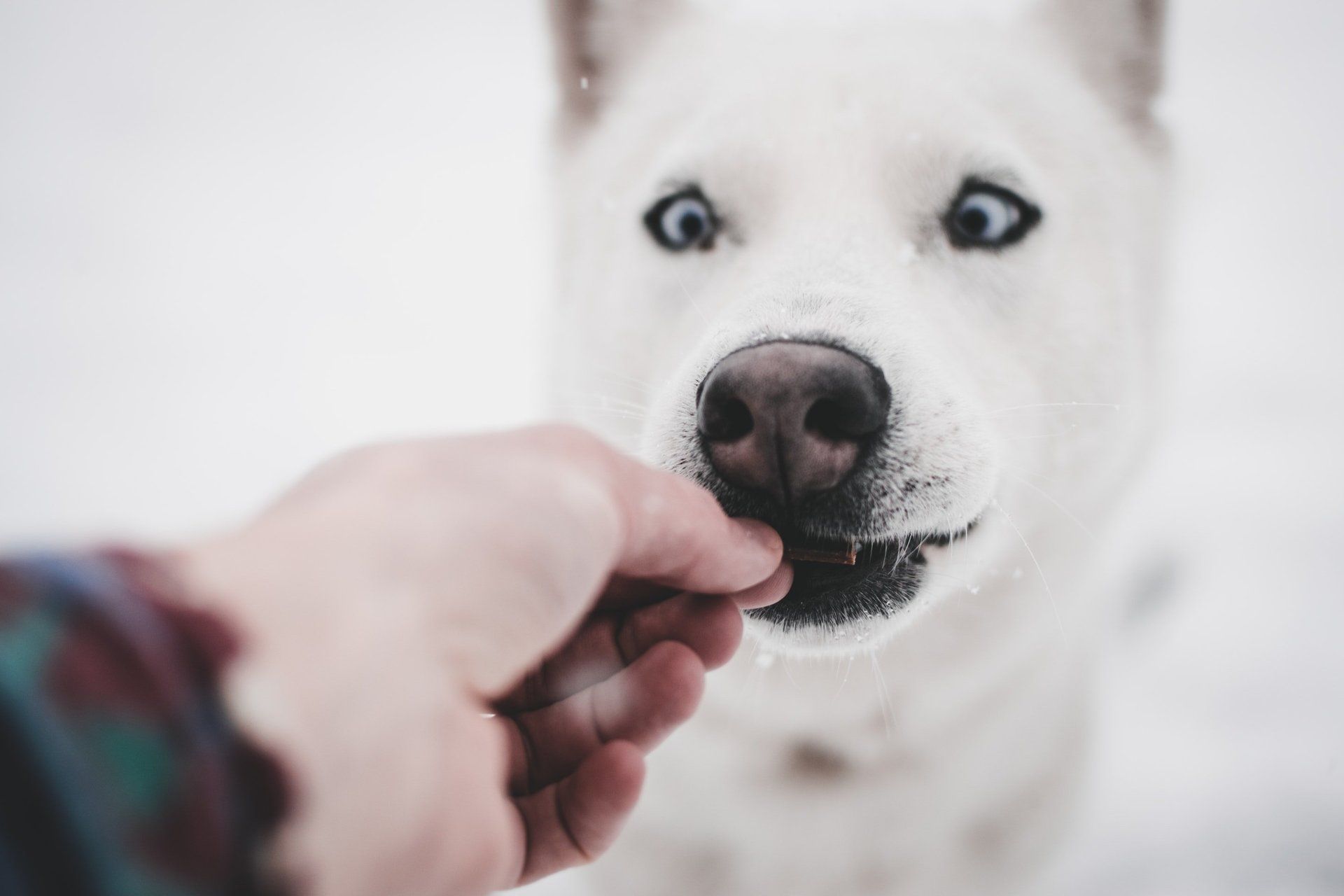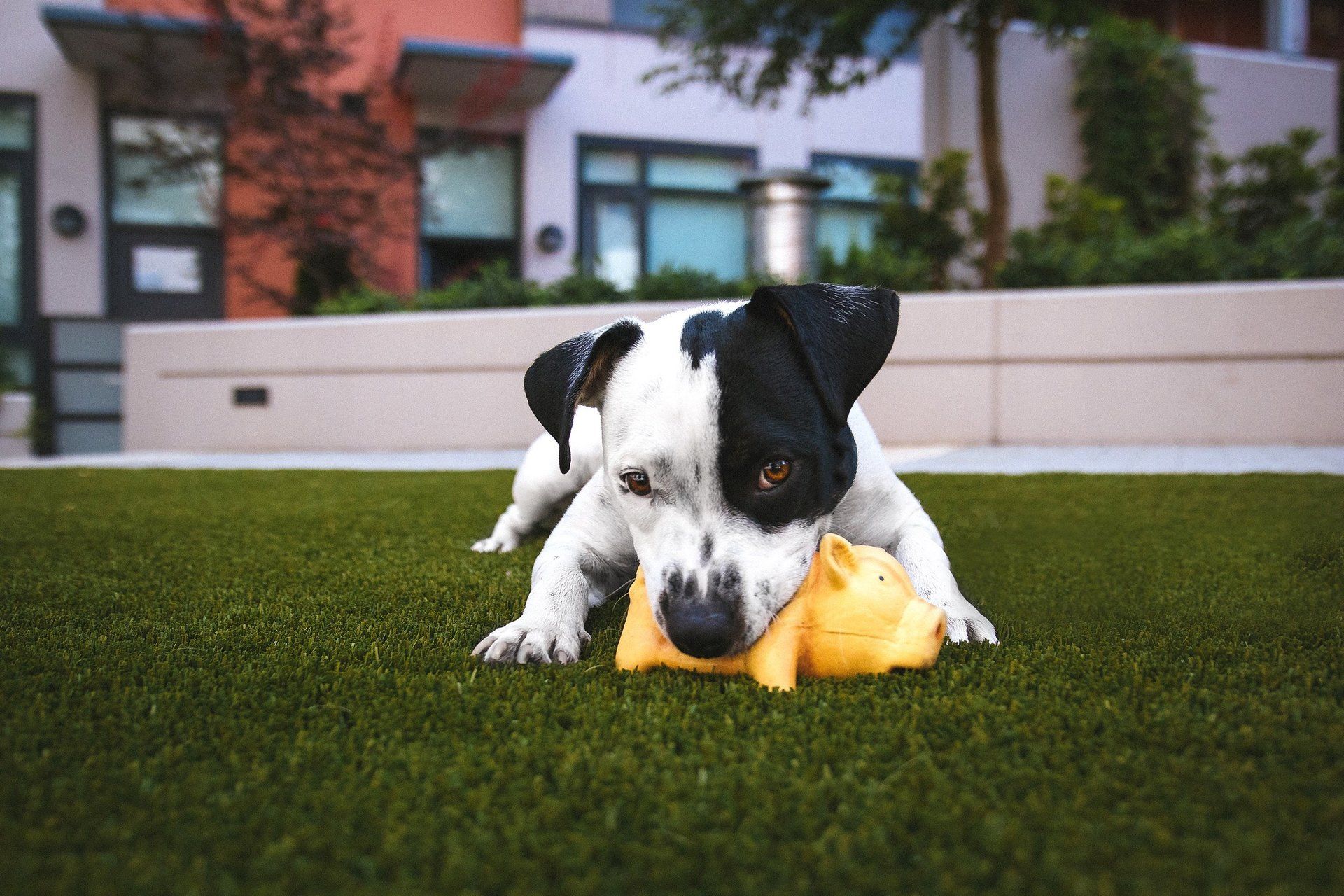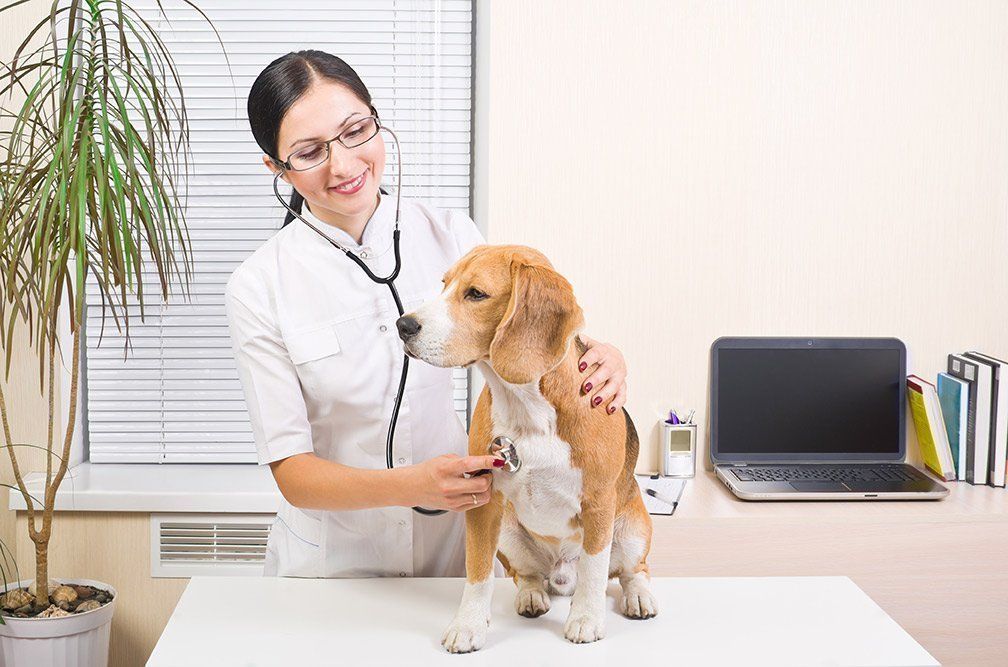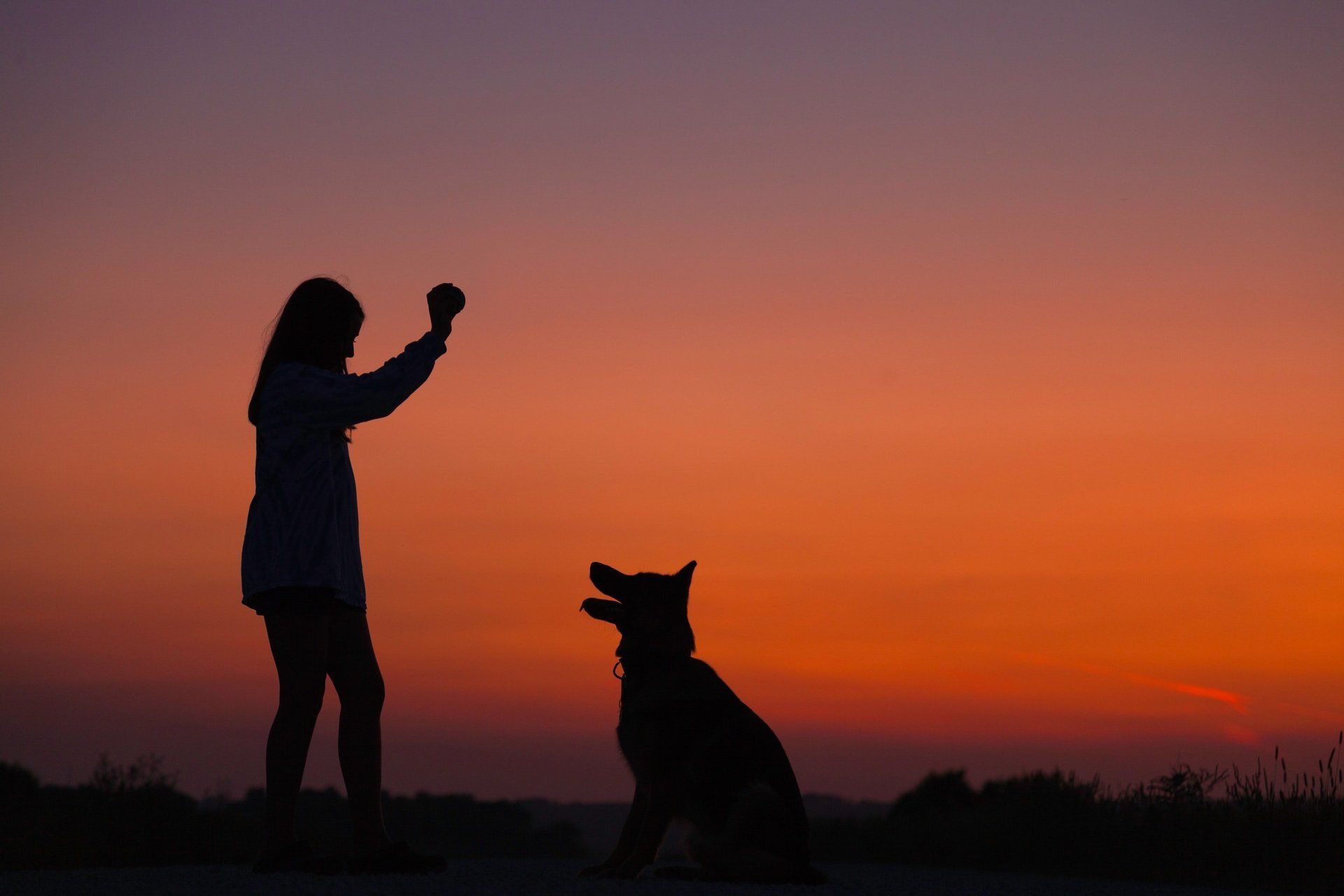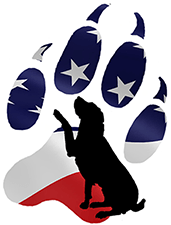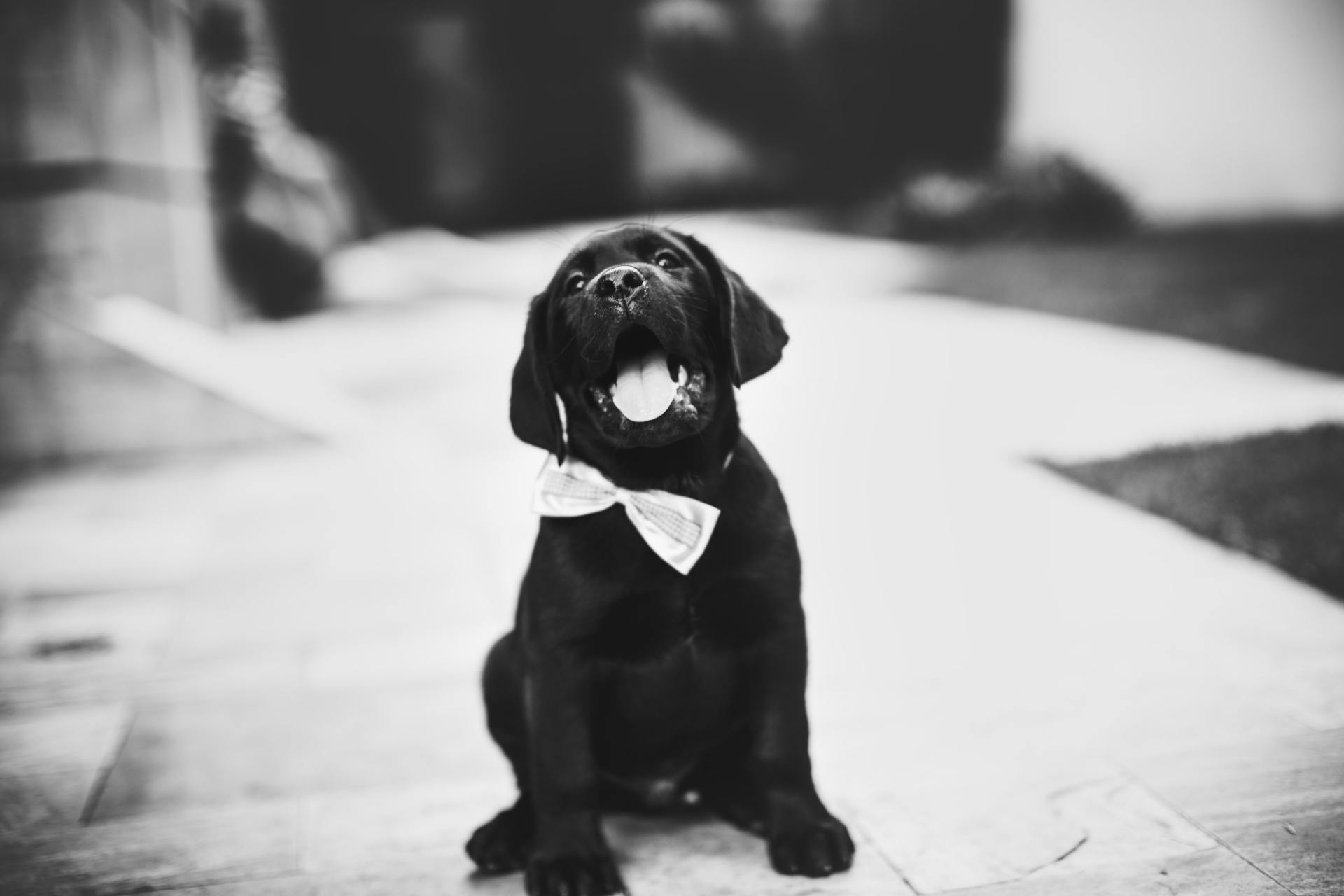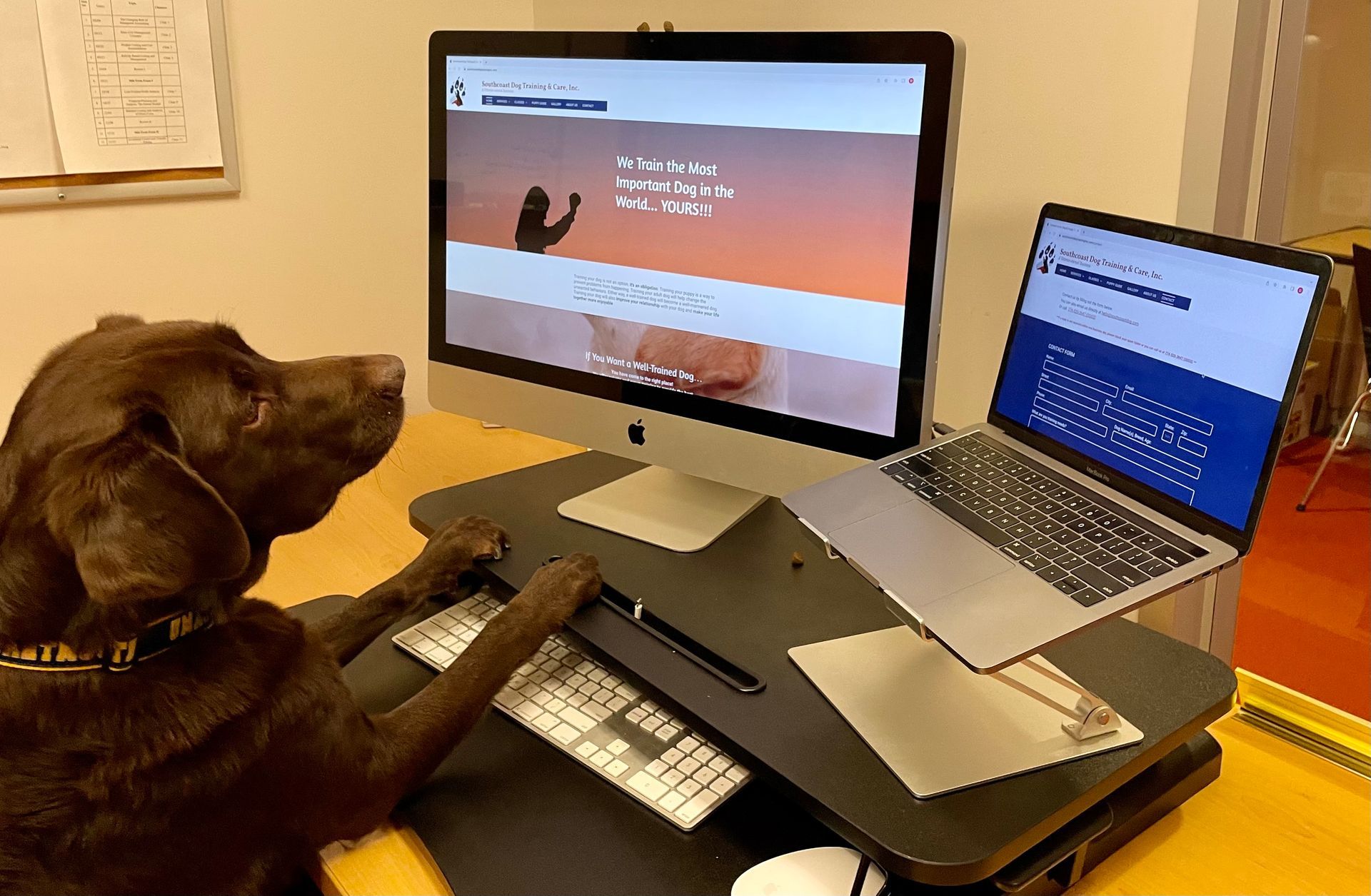Items You’ll Need
On to what things you need to buy for your new puppy. Your first walk through the pet store will be fun but also a little overwhelming. “Where do I start? What does my puppy need? I want to buy one of everything! How much will that cost???”
Just start with the basics for three good reasons:
- You have to figure out what your puppy likes and doesn’t like;
- You have to figure out what is safe for your puppy; and
- There is a good chance other people will buy things for your pup.
A quick tip on toys and bones: don’t leave all the toys and bones out all thetime for your pup. Switch them up from time to time. The same toys all the time can get boring but when you bring out new (old) toys, it can feel like theirbirthday all over again.
Identification Tag
Your pup needs to have some type of
identification tag. This should go without saying, but it might not be on the top of your mind when you are getting a new pup. All you need is something simple with the dog’s name and your phone number. Some people may put their name on it as well. Many pet stores have ID tags that come in many shapes, sizes, and colors. They often have free engraving, as well. Having your pet
microchipped, in case she gets loose, is also a good idea.
Collar and Leashes
Most importantly, you will need a collar and leash. You definitely need a basic
flat collar. This is just a regular buckle collar where you can put your pup’s identification tag, rabies tag, dog license and anything else that may help to identify the pup if she gets loose. The collar doesn’t have to be anything fancy as your pup will most likely outgrow it. Nylon collars tend to be a litter slippery and can loosen over time so you may want to consider cotton or leather. Make sure that you can
fit two fingers under the collar and make sure you check it as your pup grows. Depending on the type of dog you have, you may need a different type of collar instead of, or in addition to, a flat collar.
Ask your trainer which collar is best for your dog.
I would recommend purchasing two leashes. At some point, you will not be paying attention to your pup, and she will chew one. I see this all of the time. It’s always good to have a backup. Nylon leashes can be a little slippery and feel rough on the hands if you have a dog that is a puller. Cotton or leather leashes are better options. For training, I also recommend getting a longline of at least 12’.
Harnesses
If you are considering using a harness, back clip harnesses are not a good choice for dogs. If you think about sled dogs, harnesses are placed on the dogs and the
dogs pull. This is basically what you are asking your dog to do when you put a back clip harness on the dog. Many people use them because dogs also want to pull on flat collars, and, at least with the harness, they don’t feel like the dog is choking itself.
If you want to put your dog on a harness, get one that clips in the front, not the back, such a 3-in-1 made by PetSafe. The dog can still pull, but it won’t be as bad. Regardless of what you choose, please note that a dog can
easily slip out of a harness. If you get a harness that clips in the front, you can also
clip it to the flat collar with a safety clip as an added safety measure in case they slip out of the harness.
Gentle Leader® Headcollar
The Gentle Leader Headcollar, also made by PetSafe, is a great option for walking your dog. Like a bridle for a horse, the Gentle Leader controls the dog’s head. The Gentle Leader fits over your dog’s nose and around its neck. When the pup tries to pull, it turns her head preventing pulling and giving you your pup’s attention. I work with service dogs, and Gentle Leaders are the tool of choice for walking the dogs. Gentle Leaders reduce excessive pulling, are great for training your dog to heel, make it easy to control your dog, and do not put pressure on your dog’s throat.
There are other options, such as command collars and prong collars, that can be used for walking and obedience.
Ask your trainer what would be the best choice for your pup.
Food and Water Bowls
There are a few options when it comes to dog dishes and water bowls: plastic, ceramic, and stainless steel. The plastic and ceramic ones can have some really cute designs on them, but be aware that plastic dishes can harbor bacteria if not washed good enough and ceramic bowls could break. I prefer stainless steel for an everyday dog bowl.
For both food and water bowls, I recommend getting ones with an anti-skid rubber bottom. Your pup will not be able to pick the bowl up and empty the contents onto your floor. Trust me on this, I am writing from experience!!!
Because most dogs tend to want to devour their food, I suggest a slow-feed food bowl. You can get them in stainless steel and plastic. Regardless of the material, make sure you thoroughly wash the bowl to keep the bacteria away. Most bowls are usually dishwasher safe. The ones that have a maze look to them make it more challenging for the pup to eat. This provides some great mental exercise for your pup while slowing down her eating.
Waste Bags
Having a puppy means you will be doing some walking to make sure your pup gets some exercise. Please be considerate and clean up after them.
Grooming Supplies
All dogs, whether they have a short coat or long coat, need to be groomed. This includes
bathing, brushing, nail trimming, ear cleaning, and brushing their teeth.
Grooming needs to start sooner rather than later so the pup can get used to all these foreign objects doing weird things to them. Make sure you know what type of brush is best for your pup and how to use things like nail trimmers and toothbrushes.
Brushing your dog is beneficial for all kinds of dogs no matter what breed they are, helping to remove dead hair, dirt, and dandruff. Regular brushing also helps to bring out the natural oils in the dog’s fur. As you brush, the natural oils are spread all over your puppy’s fur, giving the coat a healthy sheen.
Another benefit of grooming is that it allows you to check your dog for any abnormalities like skin problems, ticks, and fleas or issues with their nails, teeth, ears, and eyes.
Whether you hire a professional to groom your pet or do it yourself, grooming helps keep your dog happy and healthy, gives you and your dog a time that is set aside just for the two of you, and helps you to save on veterinary bills.
Talk to your trainer about how you can make your pup comfortable with these tools.
Crates
I highly suggest you crate train your dog. Some people think it’s punishing the pup. If introduced correctly and used properly though, the crate actually becomes a
safe, comfortable place
for your pup to be. Dogs are den animals, so a warm, cozy crate will make them feel right at home. Your pup should be able to stand up, lie down, turn around and stretch while in the crate.
I prefer the stainless-steel crates that have dividers in them as you can adjust the size of their living space as they grow. I recommend throwing a blanket over the crate to make it more den-like. There are also plastic and fiberglass crates that are hard-sided.
Crates and other types of containment, like exercise pens and gates, are necessary to keep your dog safe. Just like you wouldn’t let a small child out of your sight, you shouldn’t let your pup out of your sight until she is fully housetrained. By house trained, I don’t mean just doing her business but also being able to trust that she isn’t going to go chew the kitchen table or eat a sock. Fun fact: Socks are the second most common item veterinarians remove from dogs’ stomachs.
Dog Beds
Shamefully, I have one dog, four rooms in my house, and five dog beds. I like to make sure Homer, my chocolate Labrador Retriever, is comfortable. You will want a bed in your pup’s crate, and, if there is a place where you hang out often like the kitchen or living room, another one in that area. There are so many options in dog beds out there that it’s hard to recommend any particular one. I would consider one that is
water-resistant, “chew-proof”, and has a removable/washable cover. When it comes to dogs,
I don’t believe there is anything that is truly chew-proof. Puppies chew on things. That’s one of the reasons why we crate them or keep them contained in a certain area. Make sure your pup isn’t going to chew her bed up when you put her in the crate or elsewhere.
